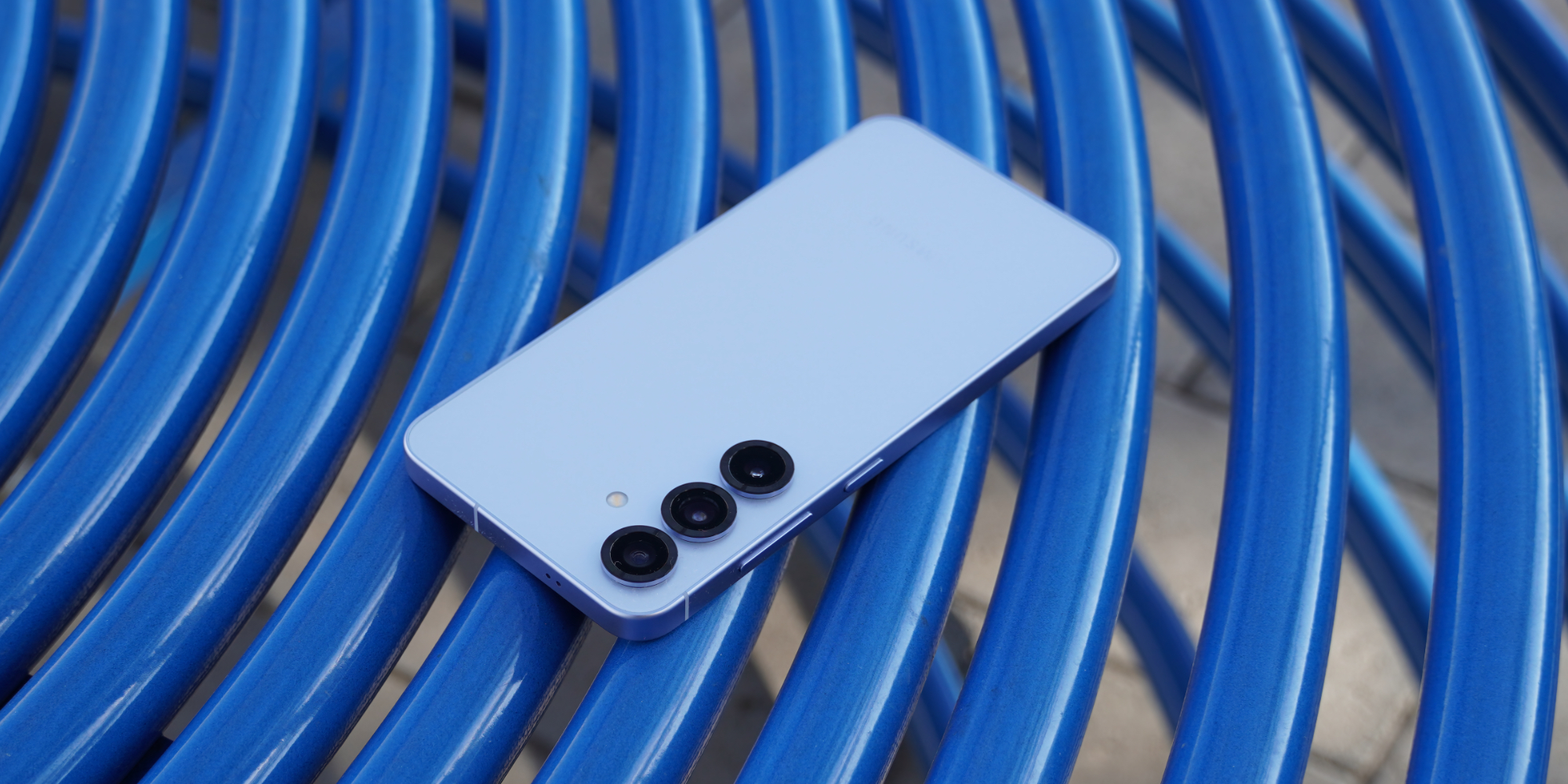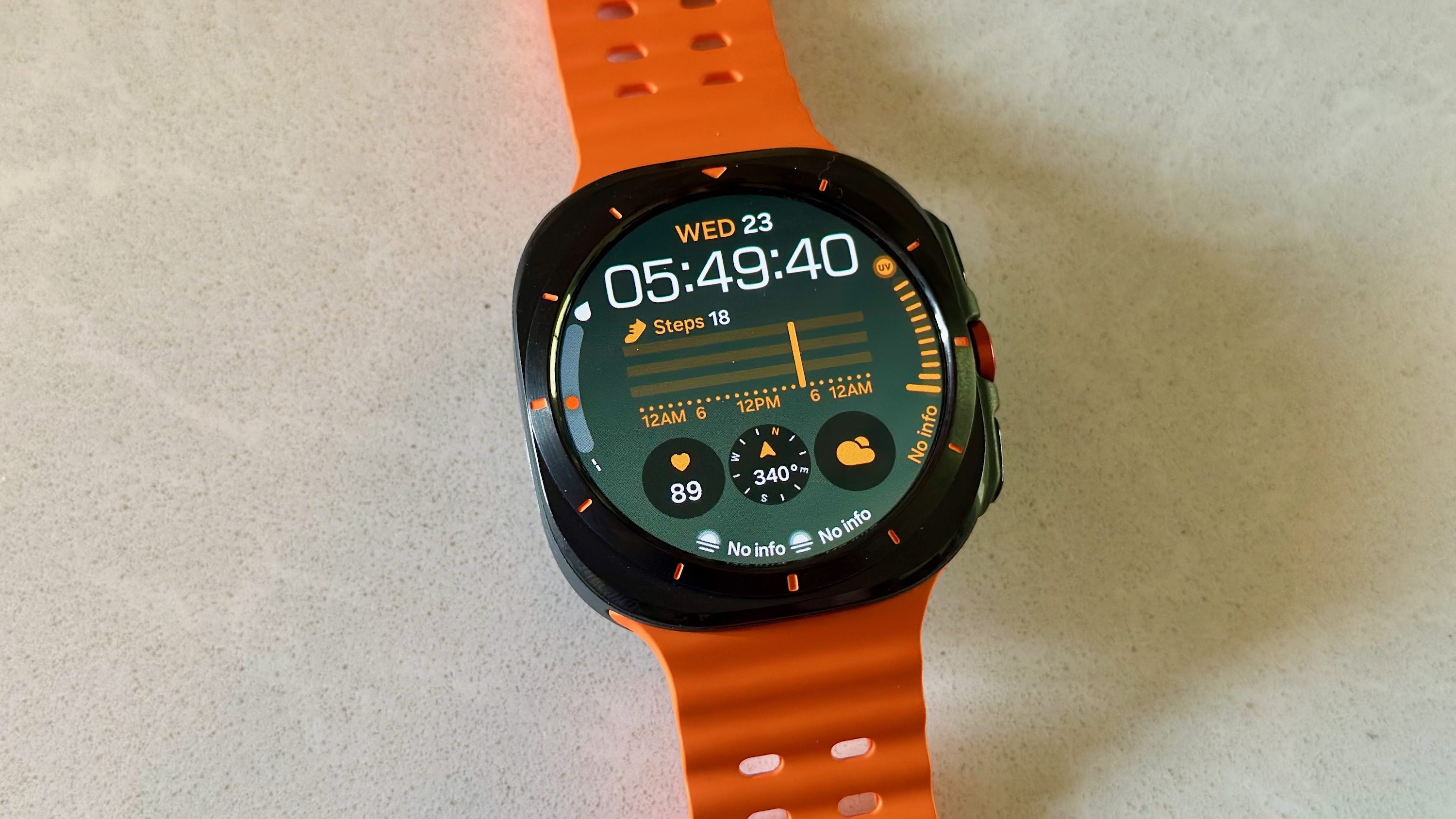Android Central Verdict
The Samsung Galaxy S25 is a bit of a mixed bag, since it provides a few notable upgrades and just as many reused components from last year's Galaxy S24. Qualcomm's new Snapdragon 8 Elite for Galaxy is a powerhouse, there's now 12GB RAM on the base model, and you get Wi-Fi 7 support. On the other hand, the rear camera system, display, and charging speeds are all unfortunately unchanged for another year. That isn't quite enough to count the Galaxy S25 out, though.
Pros
- +
Smaller form factor with slim bezels
- +
Snapdragon 8 Elite for Galaxy chipset with 12GB RAM
- +
New and improved Galaxy AI features
- +
One UI update is fresh, fun, and genuinely great
- +
Refined design with Gorilla Glass Victus 2 on front and back
Cons
- -
Qi2.1 requires a magnetic case for snap connection with chargers and accessories
- -
Lacks UWB support
- -
Relatively small 4,000mAh battery
- -
Slow 25W wired charging speeds
- -
Same camera system as Galaxy S22
Why you can trust Android Central
Aug. 26, 2025: Updated review to include details related to the Samsung Galaxy S25's audio capabilities, ensuring accuracy and our editorial standards.
Samsung fans looking for a fresh revamp of the flagship Galaxy lineup might be underwhelmed by the Samsung Galaxy S25, at least at first glance. Aside from minuscule design and finish updates, the base-model Galaxy S25 looks quite similar to the Galaxy S24 — and previous generations before that one. The biggest upgrade may just be the Qualcomm Snapdragon 8 Elite for Galaxy chipset powering it all.
And yet, despite my occasional disdain for Samsung's complacency, I've thoroughly enjoyed my time with this phone. That, plus the tiny form factor, makes me want to overlook the Galaxy S25's shortcomings in other areas. There are some egregious omissions here, like the camera system that hasn't been upgraded since the Galaxy S22. All this adds up to make the Samsung Galaxy S25 my most frustrating recommendation yet.
Yes, it's very good, and you should consider buying it if you're looking for a small, lightweight, and compact Android flagship. But I'd be lying if I weren't worried about Samsung being rewarded for bad behavior if the Galaxy S25 flies off the shelves, because it certainly could've done more here.

Brady Snyder has tested nearly a dozen Samsung phones in the past two years and reviewed numerous flagship phones from every major brand. He's written over 2,500 articles about consumer technology since 2022.
Samsung Galaxy S25: Price and availability
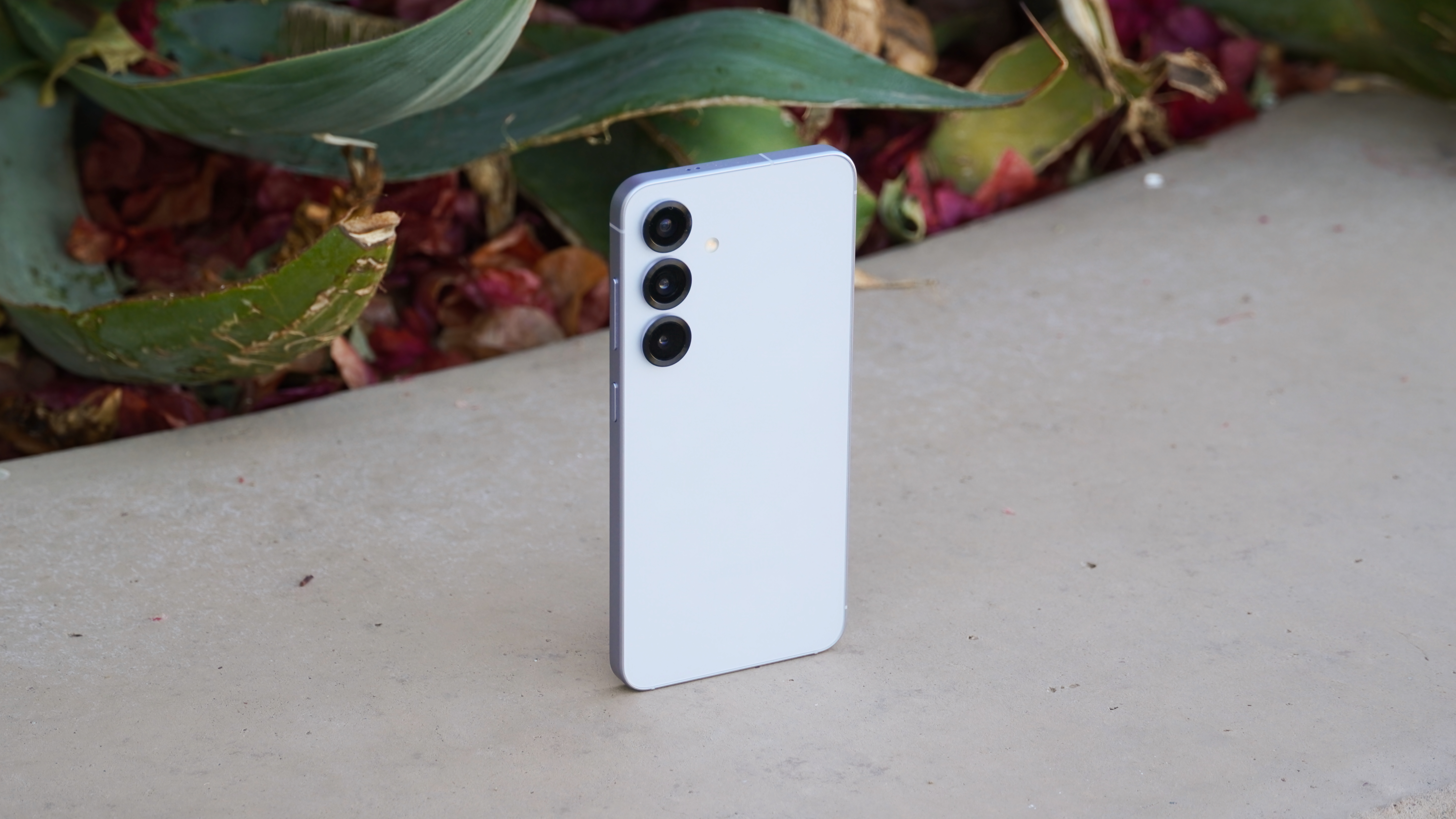
Samsung announced the Galaxy S25 series at an Unpacked event in California on Jan. 22, 2025. The phones became available for preorder on that date and officially released February 7.
- Samsung Galaxy S25 (12GB/128GB): US $799.99 / UK £799 / AU N/A
- Samsung Galaxy S25 (12GB/256GB): US $859.99 / UK £859 / AU$1,399
- Samsung Galaxy S25 (12GB/512GB): US N/A / UK £959 / AU$1,599
The Galaxy S25 comes in Icyblue, Navy, Mint, and Silver Shadow colorways. There's also a trio of Samsung exclusive colors: Coralred, Blueblack, and Pinkgold.
You'll find the Galaxy S25 available for purchase from Samsung's online store, third-party retailers like Best Buy or Amazon, and from cellular carriers. We have a complete guide to all the best deals for your reference.
Samsung Galaxy S25: Specs
Category | Samsung Galaxy S25 |
|---|---|
Processor | Snapdragon 8 Elite for Galaxy |
Display | 6.2-inch, Dynamic LTPO AMOLED 2X, 120Hz, Corning Gorilla Glass |
OS | One UI 7 (Android 15) |
Storage | 128GB, 256GB |
RAM | 12GB |
Security | Ultrasonic fingerprint sensor |
Connectivity | 5G (sub-6, mmWave), Wi-Fi 7, Bluetooth 5.4, NFC |
Battery | 4,000mAh |
Charging | 25W wired, 15W wireless, 4.5W reverse wireless |
Dimensions | 146.9 x 70.5 x 7.2 mm |
Weight | 162g |
Samsung Galaxy S25: Security and protection

Samsung includes software and hardware to ensure that its devices remain safe for its users. Beyond that, it promises to keep the Galaxy S25 updated for up to 7 years and is currently releasing monthly security patches for the device to keep it up-to-date.
Get the latest news from Android Central, your trusted companion in the world of Android
Strengths:
- The Samsung Galaxy S25 is safeguarded by the Knox Vault, a siloed security chip that stores sensitive information — like biometric data and passwords — separate from the main system.
- The Knox Matrix Trust Chain detects and responds to threats not only on your Galaxy S25, but also for your connected devices using the blockchain.
- Android's full suite of anti-theft features, including Theft Detection Lock, Offline Device Lock, and Remote Lock are fully supported by the Samsung Galaxy S25.
Weaknesses:
- By default, Samsung's Galaxy AI suite will rely on external cloud processing for certain features.
- Samsung Galaxy S25 models purchased directly from a carrier may ship with bloatware and unwanted apps, some of which ask for your location and other permissions.
- Users that want to install apps outside of the Google Play Store and Galaxy Store will need to disable Auto Blocker, losing out on related protections.
For a phone that relies on AI as much as the Samsung Galaxy S25, its security and protection features are downright impressive. Like many modern flagships, at the heart of the Galaxy S25 is a custom security chip separate from the main system. This chip, known as the Knox Vault, stores data of the highest importance in a completely different place from your device's main storage system so it is nearly impossible to compromise in an attack.
Samsung seems to have thought of everything on the Galaxy S25, because it protects against future threats and security vulnerabilities on other devices connected to your phone. For instance, the Knox Matrix Trust Chain uses private blockchain tech to notify you if devices on your network may pose a threat. Additionally, a technique called post-quantum cryptography adds cryptographic algorithms to the Galaxy S25 that protect against emerging threats — such as quantum computing.
The biggest privacy and security concern for Galaxy AI features will likely be AI processing. Samsung does say that all personalized AI features run on-device. However, some Galaxy AI features do run in the cloud by default. Luckily, you can disable this if you're a privacy-conscious user.
Samsung Galaxy S25: Audio quality
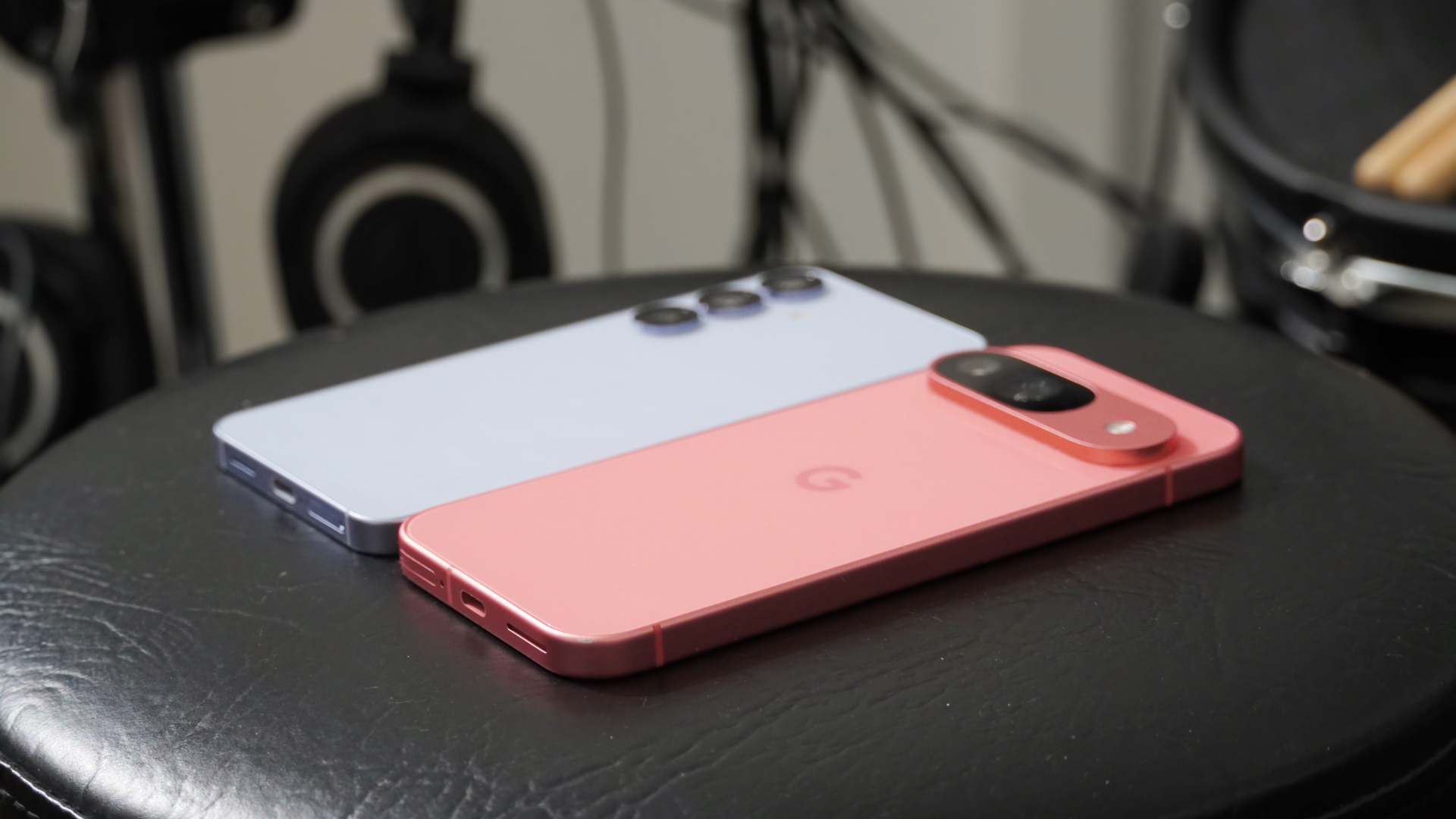
The Samsung Galaxy S25 is equipped with three microphones and stereo speakers for calls and media playback. The phone's onboard speakers sound very good, even in comparison to last year's Galaxy S24.
Often, phone speakers will sound distorted and tinny at mid-to-high volumes, but these problems aren't an issue on the Galaxy S25. Everything is crisp and clear, from voices to instruments — though I'd still recommend hooking up a pair of headphones or speakers whenever possible.
Samsung supports a variety of different audio formats, including native support for 24-bit FLACs, which are a top pick for audiophiles looking for superb audio quality way beyond CD-level. In fact, it has better coverage of audio formats than competitors like the Google Pixel 10 or OnePlus 13.
Notably, the Galaxy S25 only has Bluetooth 5.4 support, which matches the OnePlus 13 but falls short of the Google Pixel 10. The latter has Bluetooth 6 support, which adds compatibility with the high-res LC3plus wireless audio codec.
Samsung Galaxy S25 compared to other Android phones
| Header Cell - Column 0 | Connectivity | Supported formats | Supported codecs |
|---|---|---|---|
Samsung Galaxy S25 | Bluetooth 5.4, USB 3.2 Gen 1 Type-C | MP3, M4A, 3GA, AAC, OGG, OGA, WAV, AMR, AWB, FLAC, MID, MIDI, XMF, MXMF, IMY, RTTTL, RTX, OTA, DFF, DSF, APE | SBC, AAC, SSC, LDAC, aptX |
Google Pixel 10 | Bluetooth 6, USB 3.2 Type-C (generation unspecified) | AAC, FLAC, MP3, OGG, WAV | SBC, AAC, LDAC, LC3plus |
OnePlus 13 | Bluetooth 5.4, USB 3.2 Gen 1 Type-C | MP3, AAC, AMR, APE, OGG, FLAC, WAV | SBC, AAC, aptX, aptX-HD, LDAC, LHDC 5.0 |
The Samsung Galaxy S25's support for high-resolution Bluetooth audio codecs isn't outstanding. It does cover LDAC, Sony's wireless codec that supports up to 32-bit/96 kHz audio transmission. However, it misses out on Qualcomm's aptX HD, Adaptive, or Lossless, which is particularly disappointing considering the hardware is there thanks to the Snapdragon 8 Elite chip.
Samsung has its own codec, the Samsung Seamless Codec (SSC), for use when the Galaxy S25 is connecting with ecosystem products like the Galaxy Buds 3 Pro. While this specific Bluetooth codec is exclusive to Samsung, the general premise isn't — OnePlus supports the LHDC 5.0 when connecting to compatible headphones, like the Buds Pro 3.
As such, most people aren't likely to notice a difference in sound quality between the Galaxy S25 and competing Android flagships. That's especially true if their source files or streamed content is lossy, as the Bluetooth codec or wired audio format won't be the limiting factor.
You can add support for better Bluetooth audio codecs by plugging a cheap dongle into the USB 3.2 Gen 1 Type-C port, which also supports wired audio output.
Samsung Galaxy S25: Design and display

- The Galaxy S25's 6.2-inch form factor and 162-gram weight trounce the competition.
- Similar in overall design to the Galaxy S24, the Galaxy S25 features rear camera lenses with DSLR-style covers.
It's clear from a look down the spec sheet that the Galaxy S25 has to offer something unique to make buyers look past its shortcomings. The good news is that Samsung did create something unique with the Galaxy S25. It's perhaps the last small Android flagship left.
Small phone lovers like myself simply have to acknowledge that with the departure of the Asus Zenfone (as we knew it), the category is on life support. Unless you count clamshell foldables like the Samsung Galaxy Z Flip 6, the Galaxy S25 is indeed one of the smallest 2025 flagships available for purchase today.
The display on the Galaxy S25 remains 6.2 inches, but Samsung has shrunk the chassis in every way. It's smaller, thinner, and lighter than the Galaxy S24.
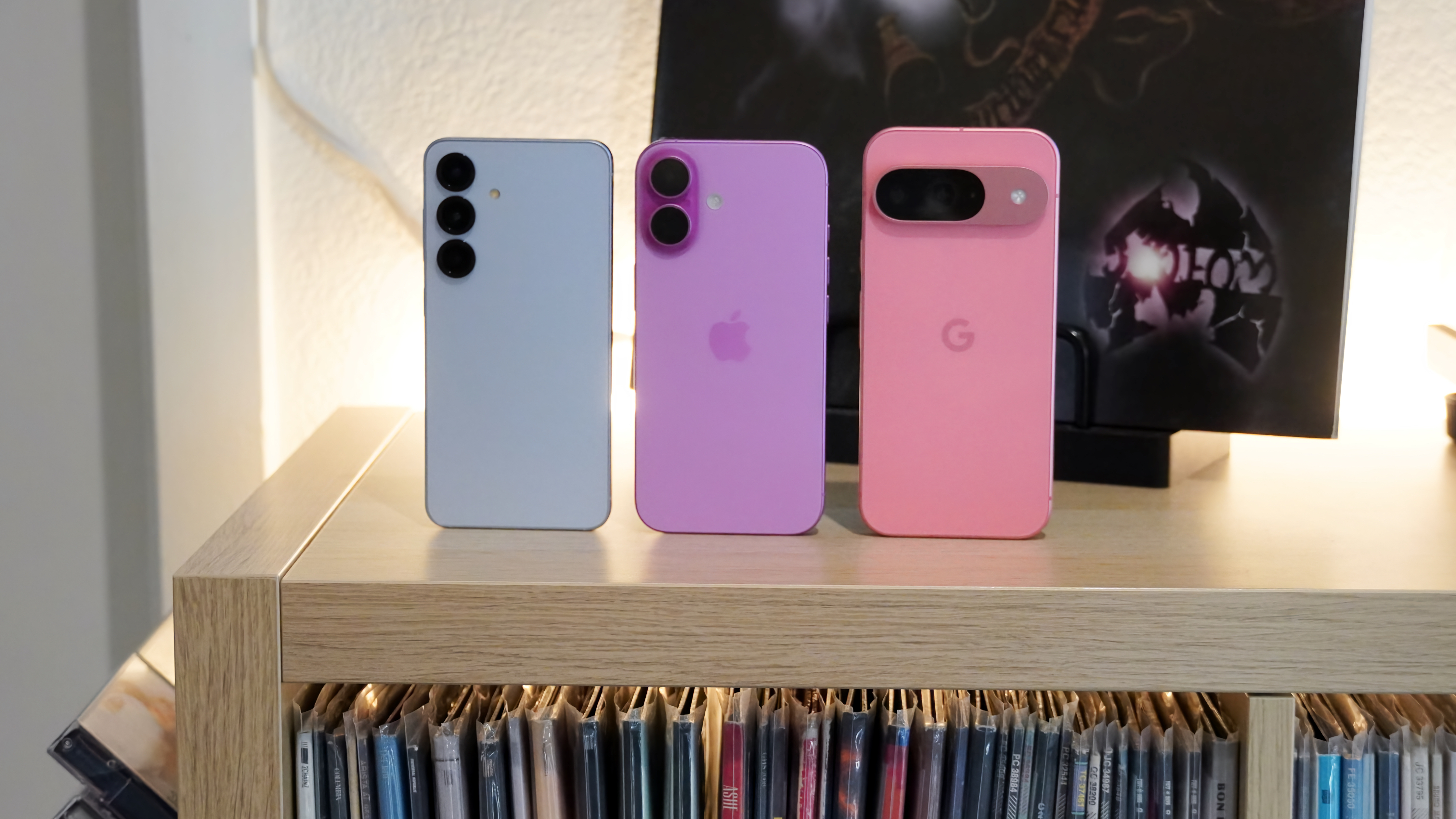
Specifically, the Galaxy S25 measures 146.9 x 70.5 x 7.2 mm and weighs 162 grams. In perspective, the base Pixel 9 weighs a whopping 198 grams. I already enjoyed the form factor of the Galaxy S24, and the Galaxy S25 feels better in every way.
Overall, the design of the Galaxy S25 feels like a blend of the design trends seen on Galaxy foldables and the Galaxy S24. The design remains the same, featuring flat aluminum side rails with rounded corners and chamfered edges, as well as Gorilla Glass Victus 2 on the front and back. Meanwhile, the rear camera lenses now have DSLR-style covers, matching the Galaxy foldables.
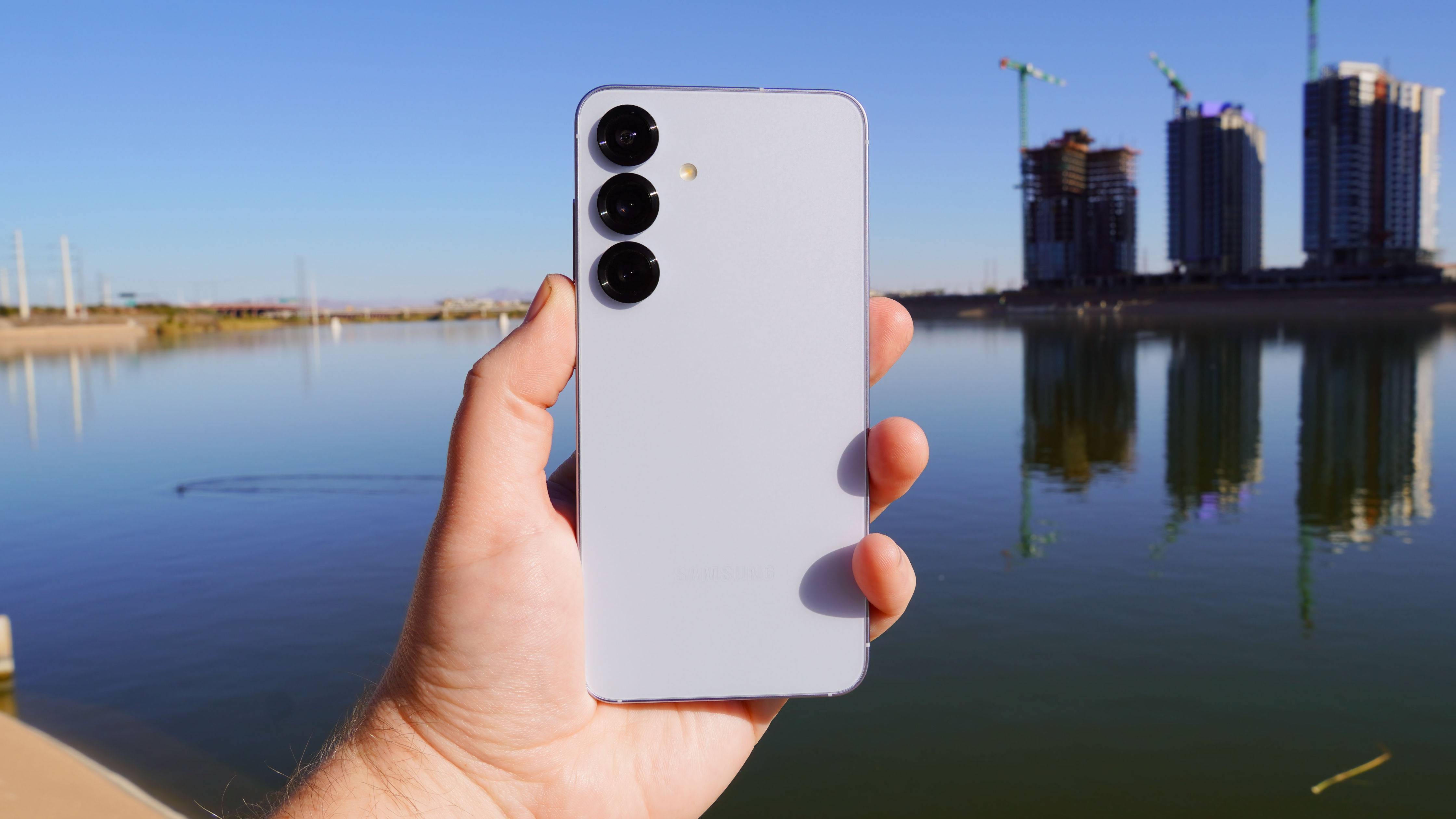
When I reviewed the Galaxy S24 last year, I noted that the display's bezels appeared smaller than those of any other phone I had tested. Compared to the Galaxy S24, the screen-to-body ratio has only increased by 0.2% on the Galaxy S25, so both devices will feel similar.
The similarities likely stem from the fact that both phones appear to have the same exact display panel. It's an AMOLED 2X display that goes up to 120Hz with a variable refresh rate, HDR10+, and 2,600 nits of maximum brightness. The resolution is 1080 x 2340 pixels, meaning it's only FHD+. As a result, the Galaxy S25 doesn't have the ProScaler for QHD+ that's now available on the Plus and Ultra models.
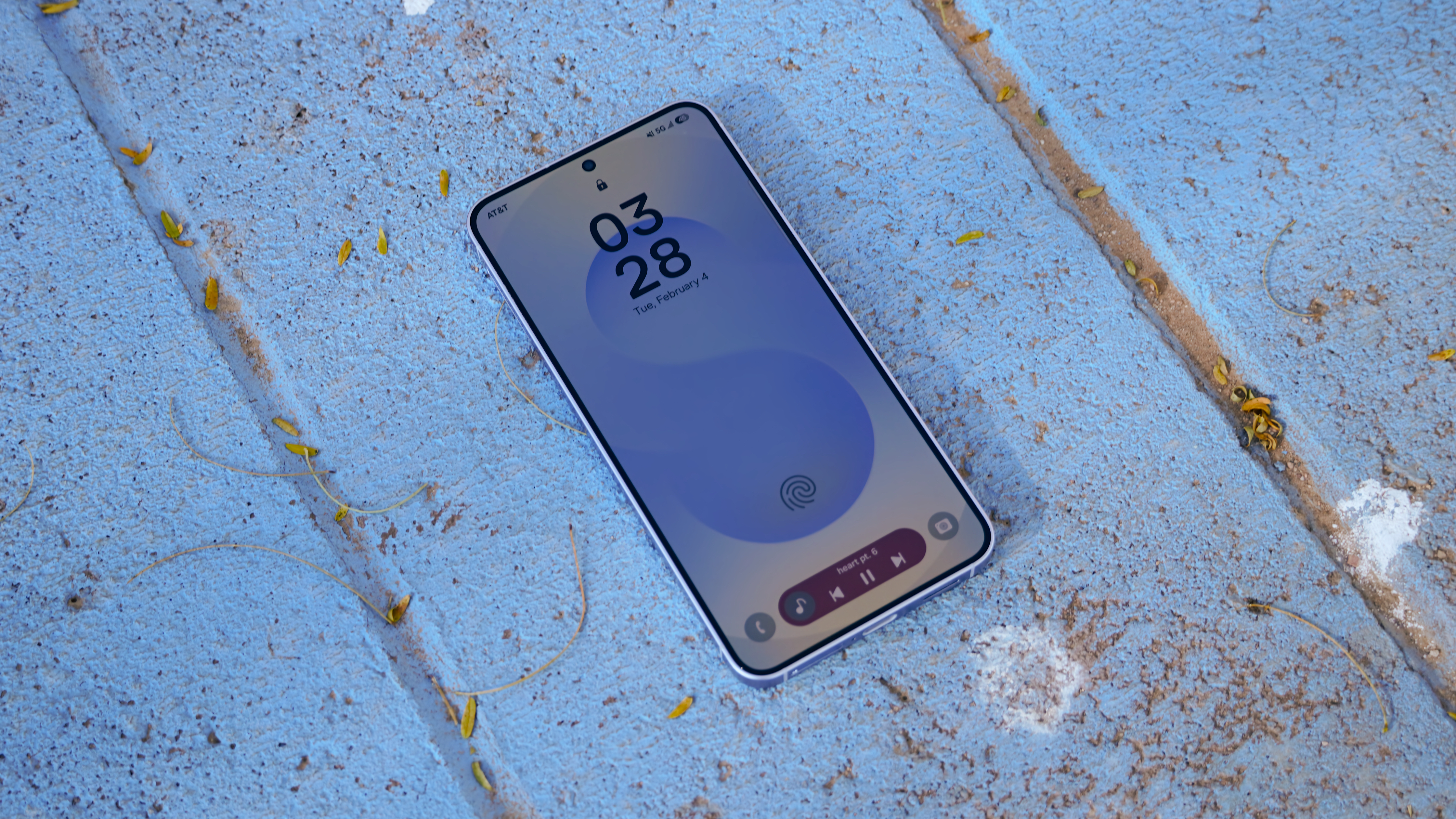
The lack of upgrades doesn't change the fact that the Galaxy S25 looks stunning in most conditions. If I had to nitpick, the brightness could be improved. Other handsets can do much better, and out-of-the-box brightness outdoors should be higher.
Around the edges, you'll find a volume rocker and a side button used for power and voice assistant control. The side button can be mapped to Gemini for quick access to agentic assistance. At the bottom, there's a speaker grill, a USB 3.2 Type-C port that supports DisplayPort Alt Mode, and a physical SIM card tray. The right side merely offers a mmWave cutout for enhanced 5G connectivity.
To sum up, don't overlook the Galaxy S25's form factor. Its thinness and lightness, paired with the power we'll get to next, make it a compelling option in a sea of large flagships.
Samsung Galaxy S25: Hardware and specs
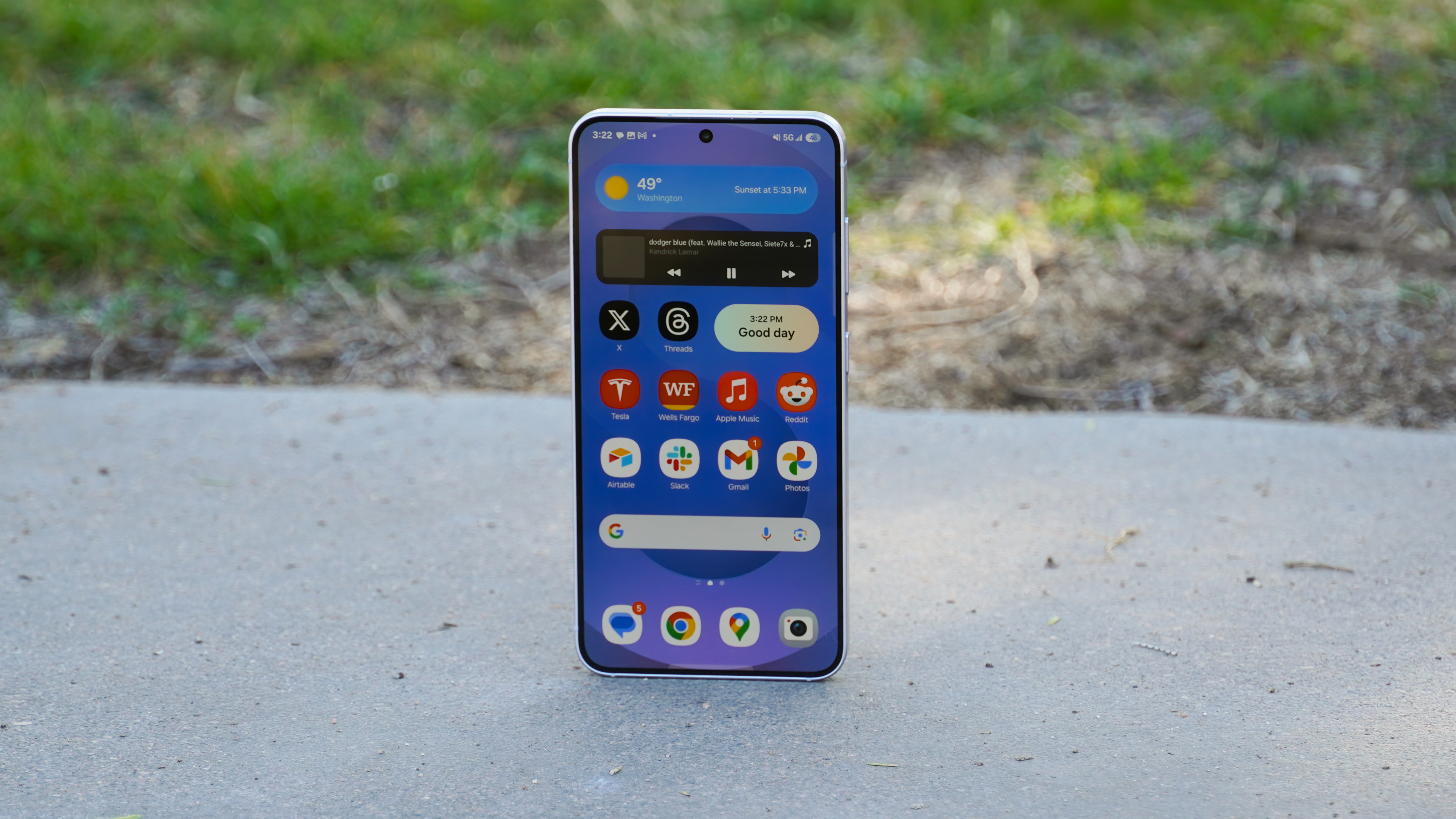
- Qualcomm's Snapdragon 8 Elite for Galaxy is the best mobile chipset for Android phones today.
- The Samsung Galaxy S25 experiences slight thermal throttling under extreme, consistent loads.
- The lack of an ultra-wideband (UWB) chip on the base Galaxy S25 is a significant oversight.
The hardware inside the Samsung Galaxy S25 Plus is both the best and worst aspect of this device. Let's start with the good. It's powered by the Snapdragon 8 Elite for Galaxy chipset, which was co-designed by Samsung and Qualcomm. In essence, it means that the Galaxy S25 is the most powerful Android phone on the market.
This is reflected in benchmark tests, where the Galaxy S25 came out on top in Geekbench 6 runs. It decisively beat the Google Pixel 9, a phone that uses the underpowered Tensor G4 processor. Previously, Google had the edge in AI, with 45 tokens per second supported for AI operations on the Pixel 9.
Phone | Processor | Geekbench AI (single / half / quantized) |
|---|---|---|
Samsung Galaxy S25 | Qualcomm Snapdragon 8 Elite for Galaxy | 2,062 / 2,295 / 3,335 |
Google Pixel 9 | Google Tensor G4 | 1,402 / 1,381 / 2,111 |
Samsung and Qualcomm completely flipped the script with the Galaxy S25. It can process up to 70 tokens per second for AI tasks, dethroning the Pixel 9. With performance, AI processing, and Galaxy optimization, it looks like the Galaxy S25 is the top-performing base model of any flagship offering in 2025.
Phone | Processor | Geekbench 6 (single/multi-core) |
|---|---|---|
Samsung Galaxy S25 | Qualcomm Snapdragon 8 Elite for Galaxy | 3,025/9,640 |
Google Pixel 9 | Google Tensor G4 | 1,572/3,792 |
iPhone 16 | Apple A18 | 3,417/8,336 |
OnePlus 13 | Qualcomm Snapdragon 8 Elite | 2,893/9,058 |
Samsung Galaxy S24 | Qualcomm Snapdragon 8 Gen 3 for Galaxy | 2,228/6,656 |
It is unlikely that you'll notice the speed difference between the Galaxy S25 and another capable flagship when holding them side by side. With that being said, this is not the kind of year-over-year performance improvement we usually see in smartphone SoCs. It's a once-in-a-decade upgrade worth noting.
To test how the Snapdragon 8 Elite for Galaxy pushes the battery and cooling system in the Galaxy S25 to its limits, I ran the 3DMark Wild Life Extreme stress test, which is a graphics-heavy test lasting 20 minutes in a continuous loop. I surprisingly found that the Galaxy S25 didn't get scolding hot to the touch.
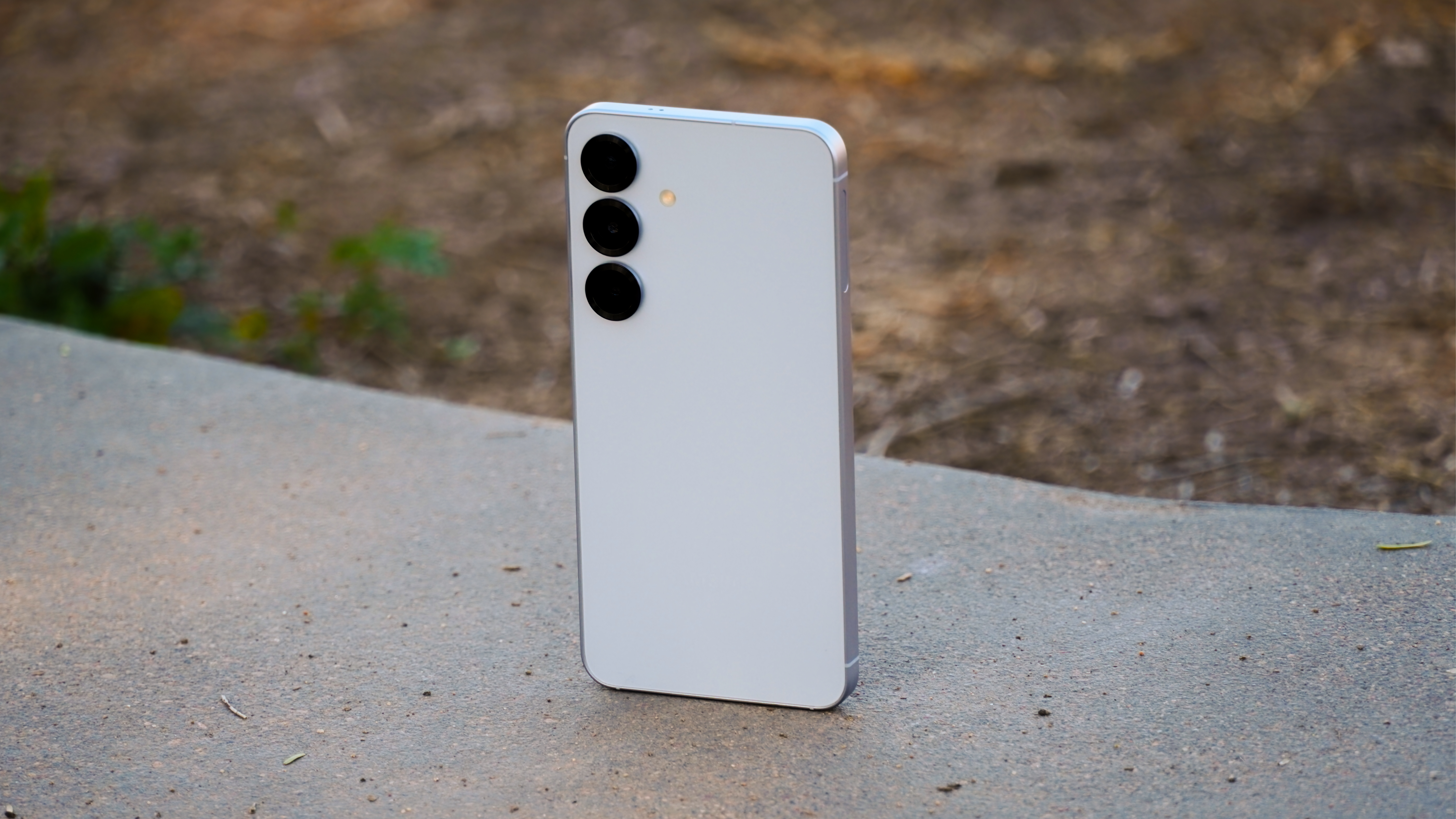
However, the loop score during the stress test continually decreased over the course of the 20-minute stress test. The Galaxy S25 hit a peak of 15,336 in the second loop and dipped under 11,000 by the 13th loop. It finished with a final loop of 10,991.
What does this all mean? Essentially, the Galaxy S25 will slow down the Snapdragon 8 Elite for Galaxy processor to keep the phone cool. As a result, its internal temperature only increased by 5 degrees Celsius during the test and it used just 11% of the battery.
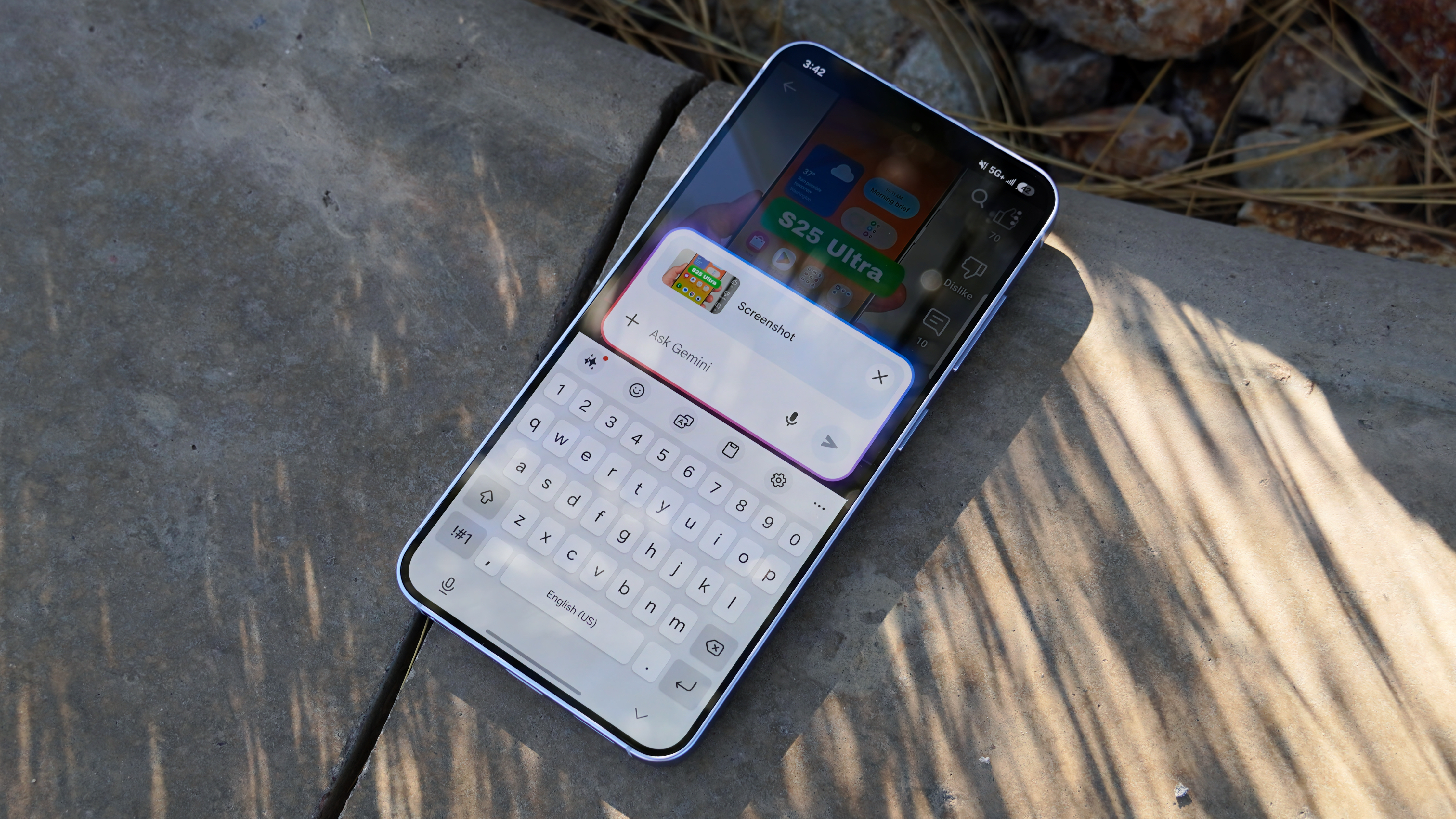
I mentioned that the hardware was also a drawback of the Samsung Galaxy S25, and here's why. There are some omissions that are extremely hard to justify. For starters, the base model Galaxy S25 does not come with an ultra-wideband (UWB) chip. If you plan to use Samsung's own SmartTag trackers or the Google Find Hub, you shouldn't buy the Galaxy S25.
Additionally, the phone still charges painfully slow — at 25W over a cable, which is unacceptable for a flagship in 2025. It supports the Qi 2.1 standard, offering 15W wireless charging and 4.5W reverse wireless charging. It doesn't support MagSafe, however.
Those are just a few small missed opportunities that might not matter much today, but could limit you down the road if you plan to keep this phone for five or more years. There's still plenty of good, like the processor, Wi-Fi 7 support, and Bluetooth 5.4 support.
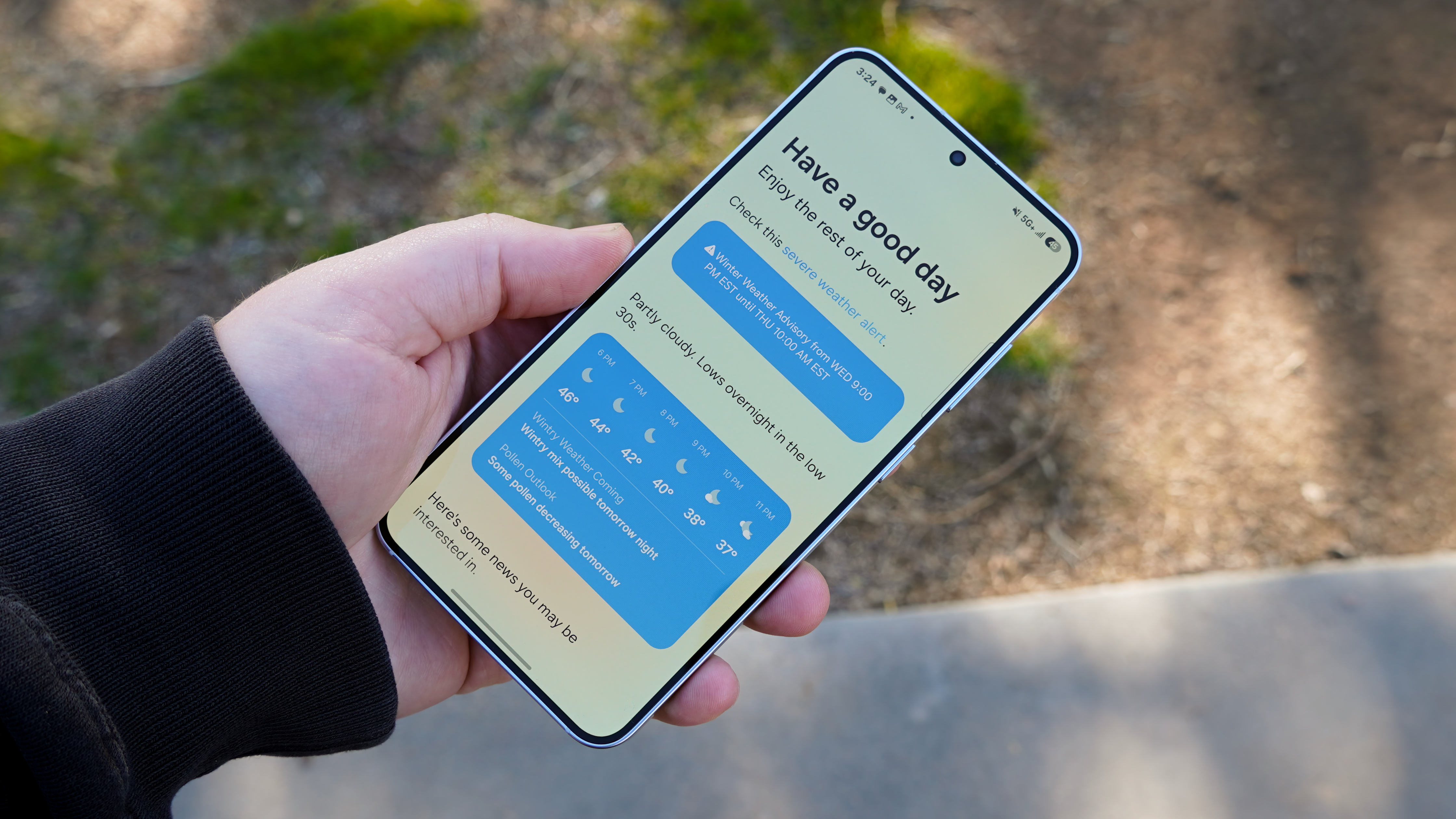
The phone's battery capacity is 4,000mAh, just like last year. A bigger battery would be nice, but I can live with this capacity in this form factor. For most people, the Galaxy S25 should offer all-day battery life. I consistently got 6+ hours of screen-on time with a mix of phone calls, video streaming, camera usage, and social media doom-scrolling. That was paired with about 10+ hours of screen-off time between charges.
Most of the time, the Galaxy S25 lasts all day. If you're able to briefly top off the battery at various times throughout the day, you'll be golden. I find this easy to do, simply keeping a cable or wireless charging pad at my desk and in the car.
Samsung Galaxy S25: Cameras
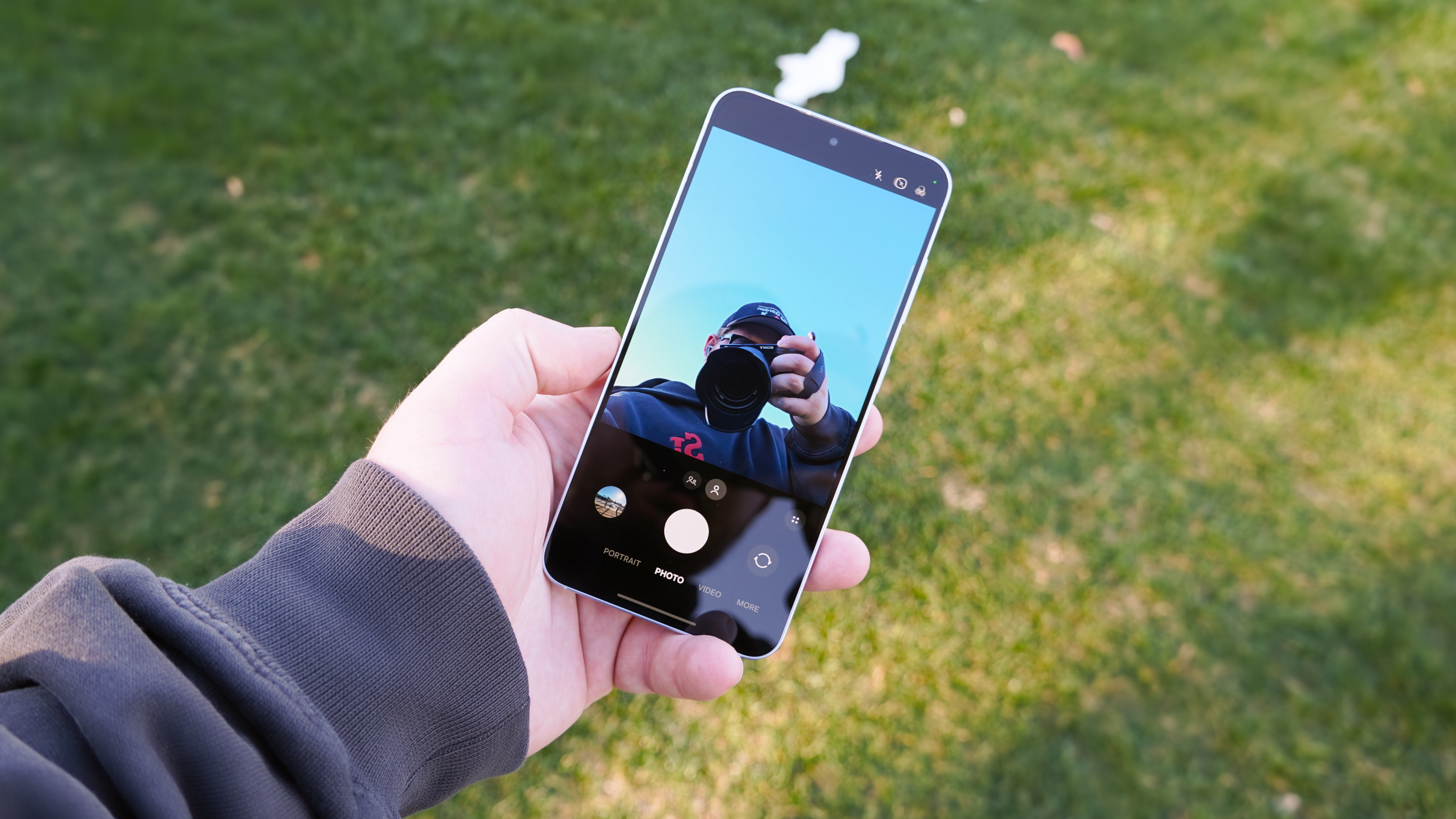
- The camera hardware remains unchanged, dating back to the Samsung Galaxy S22 series.
- Telephoto lens is still a major advantage, offering optical zoom at this affordable price point.
Samsung reused the rear camera system in the Galaxy 25 for the fourth straight smartphone generation. That's right — the Galaxy S25 and the Galaxy S22 share camera sensors. You get a 50MP, f/1.8 main sensor, a 12MP, f/2.2 ultrawide with a 120-degree field of view, and a 12MP, f/2.2 telephoto lens with 3x optical zoom. The hardware is decent enough, but it's old and performs like you'd expect of four-year-old lenses.
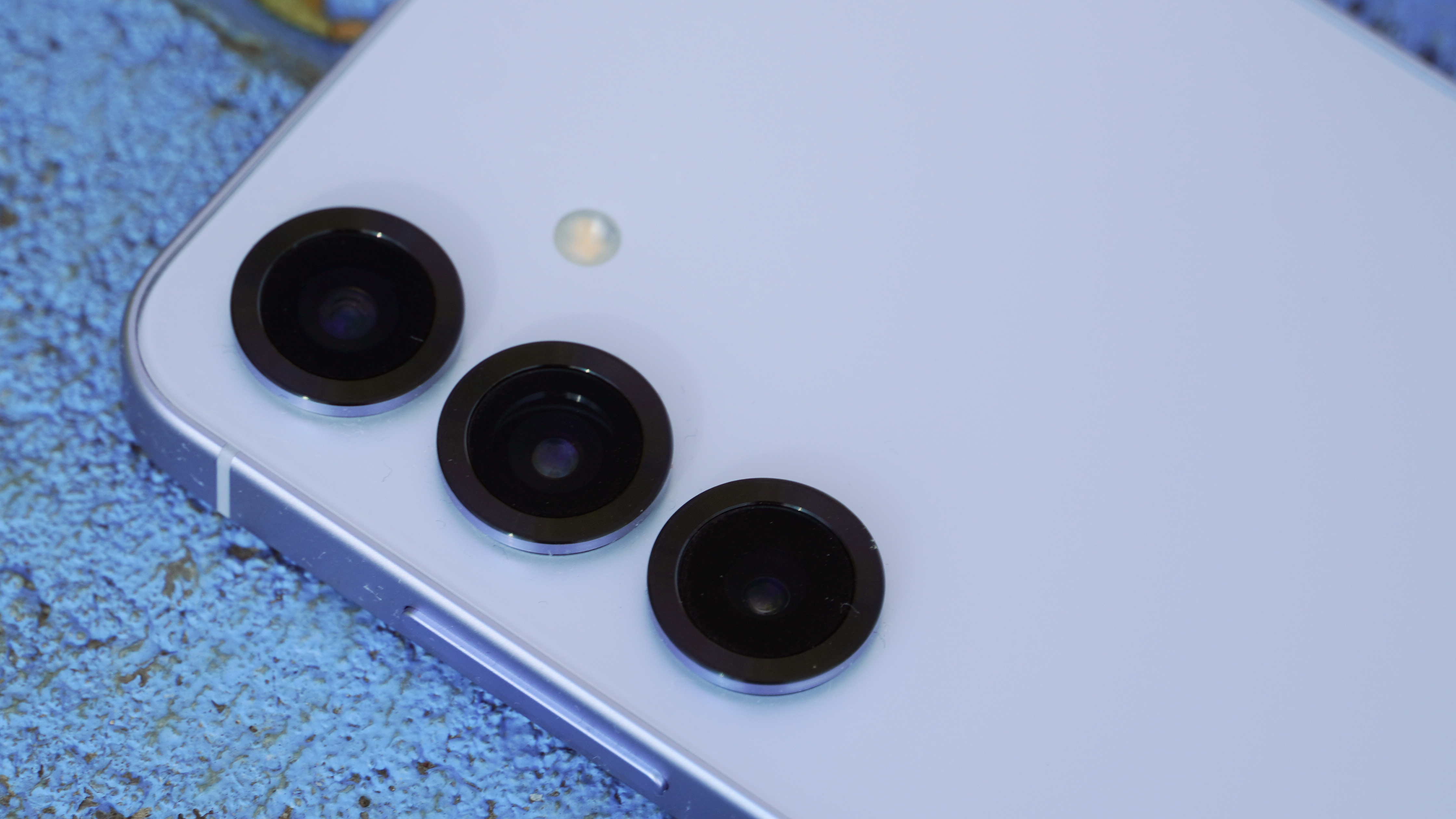
The one entirely positive thing I can say about the Galaxy S25's cameras is that they include a telephoto sensor, which is crucial and isn't a given on flagships of this size. I love that the Galaxy S25 gives you 3x optical zoom in a 6.2-inch device.
Paired with the ultrawide lens, the camera system makes for varying zoom levels, as shown in the gallery below.




There's some evidence to suggest that the Galaxy S25 is improved in a few areas, such as shutter lag and motion blur. However, the Samsung Galaxy S25's camera is still no match for a moving car on a nighttime street.
I've also found the Galaxy S25 camera to produce colors that appear slightly dull compared to those in other flagship cameras. I'm glad that Samsung doesn't take the Pixel approach, which includes oversaturating colors and adding faux vibrancy. I do think iPhone shots have a better natural pop of color, though.




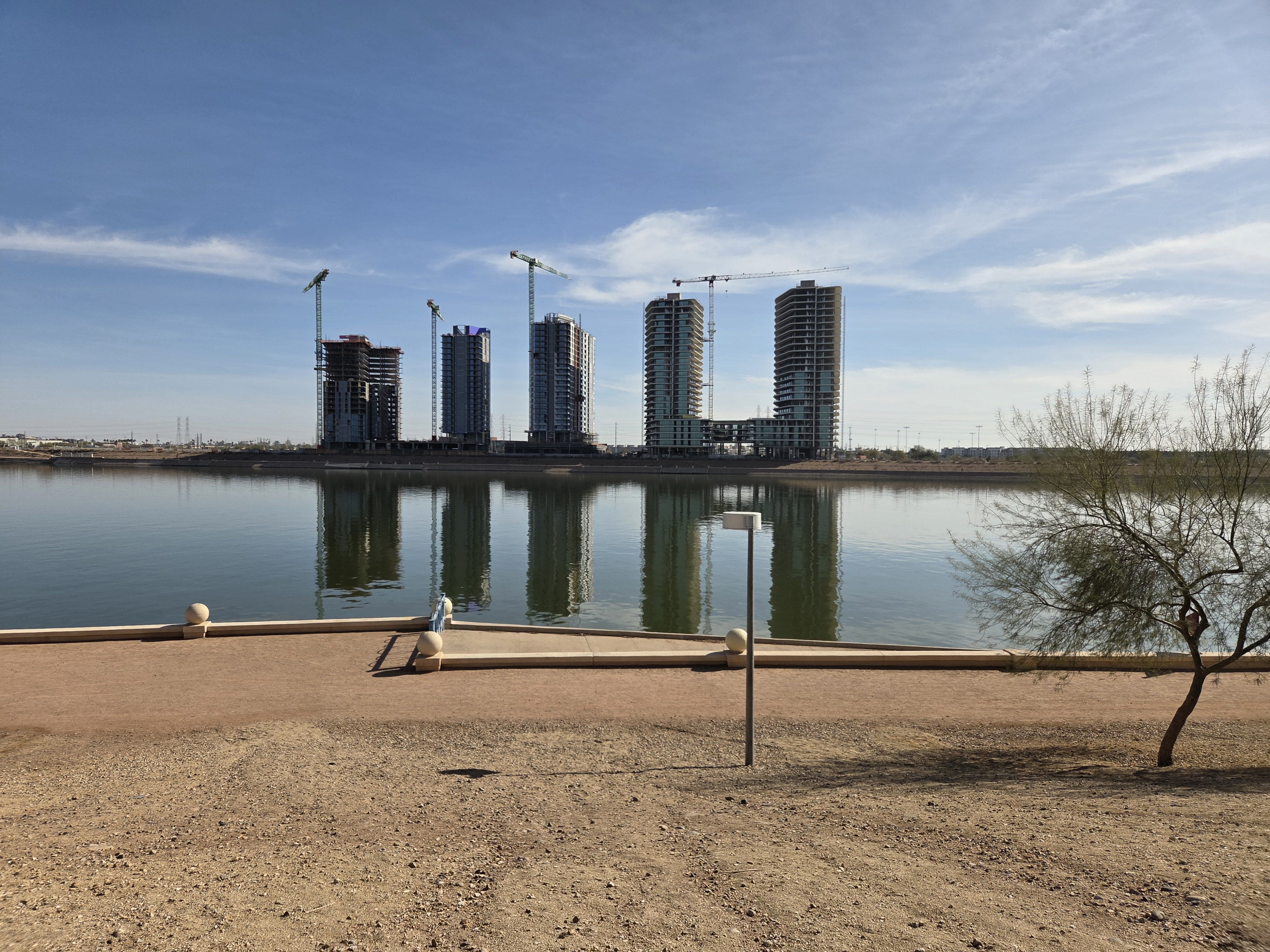


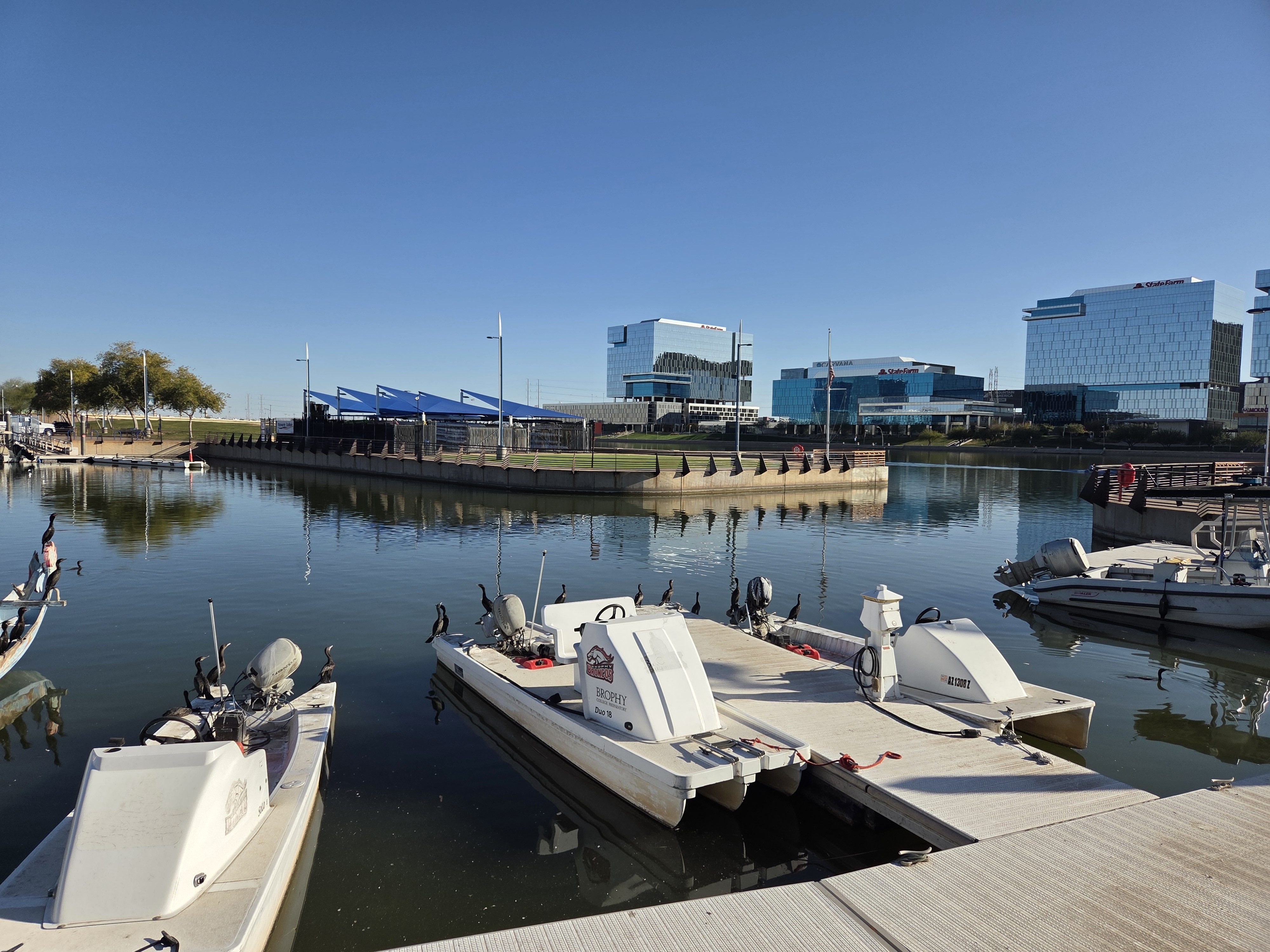








Both the Google Pixel 9 and Samsung Galaxy S25 have excellent camera systems, but each performs better in certain situations. For instance, the Pixel 9 is clearly better at producing crisp macro shots, as you can see in the comparison below:

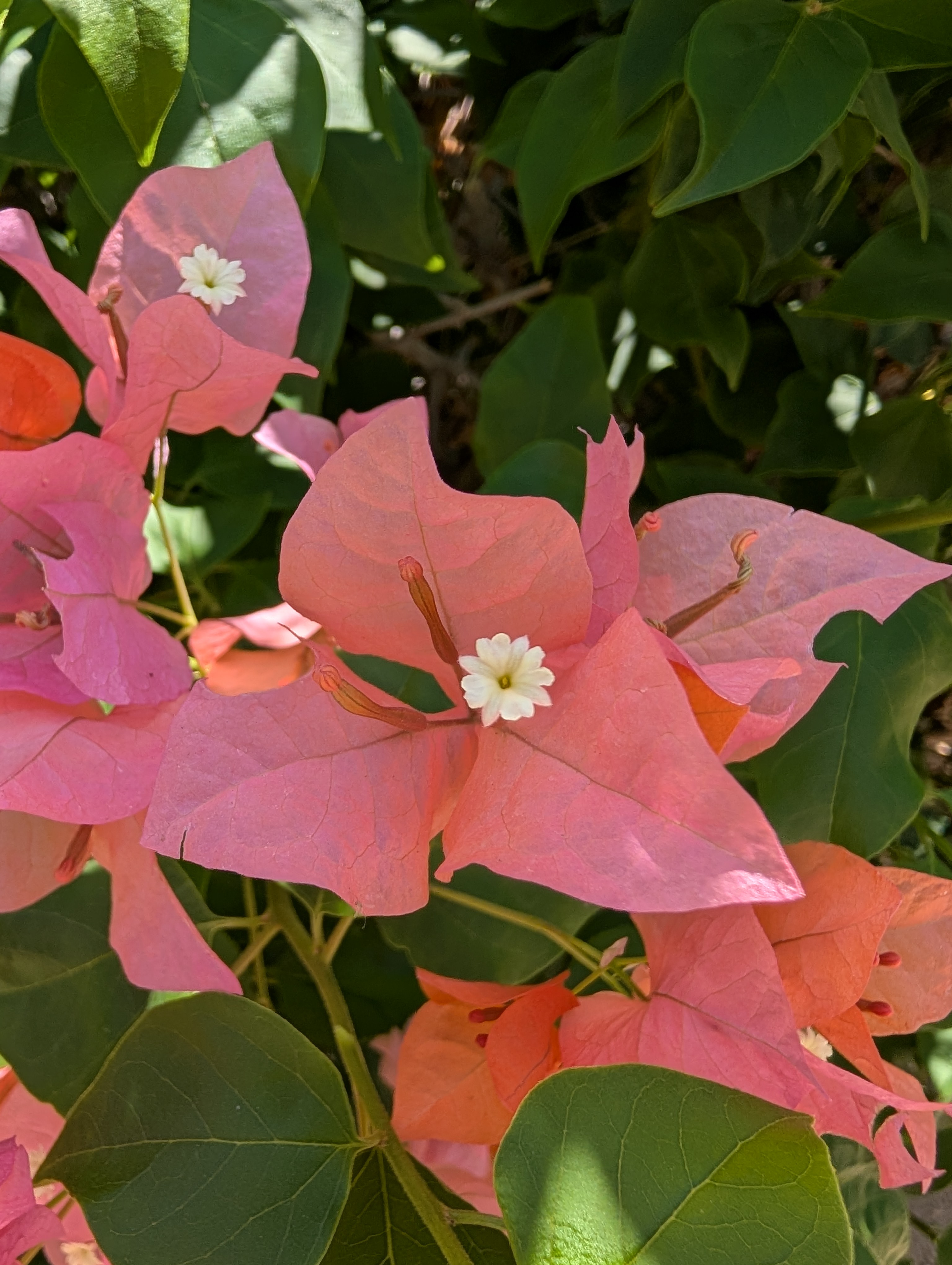
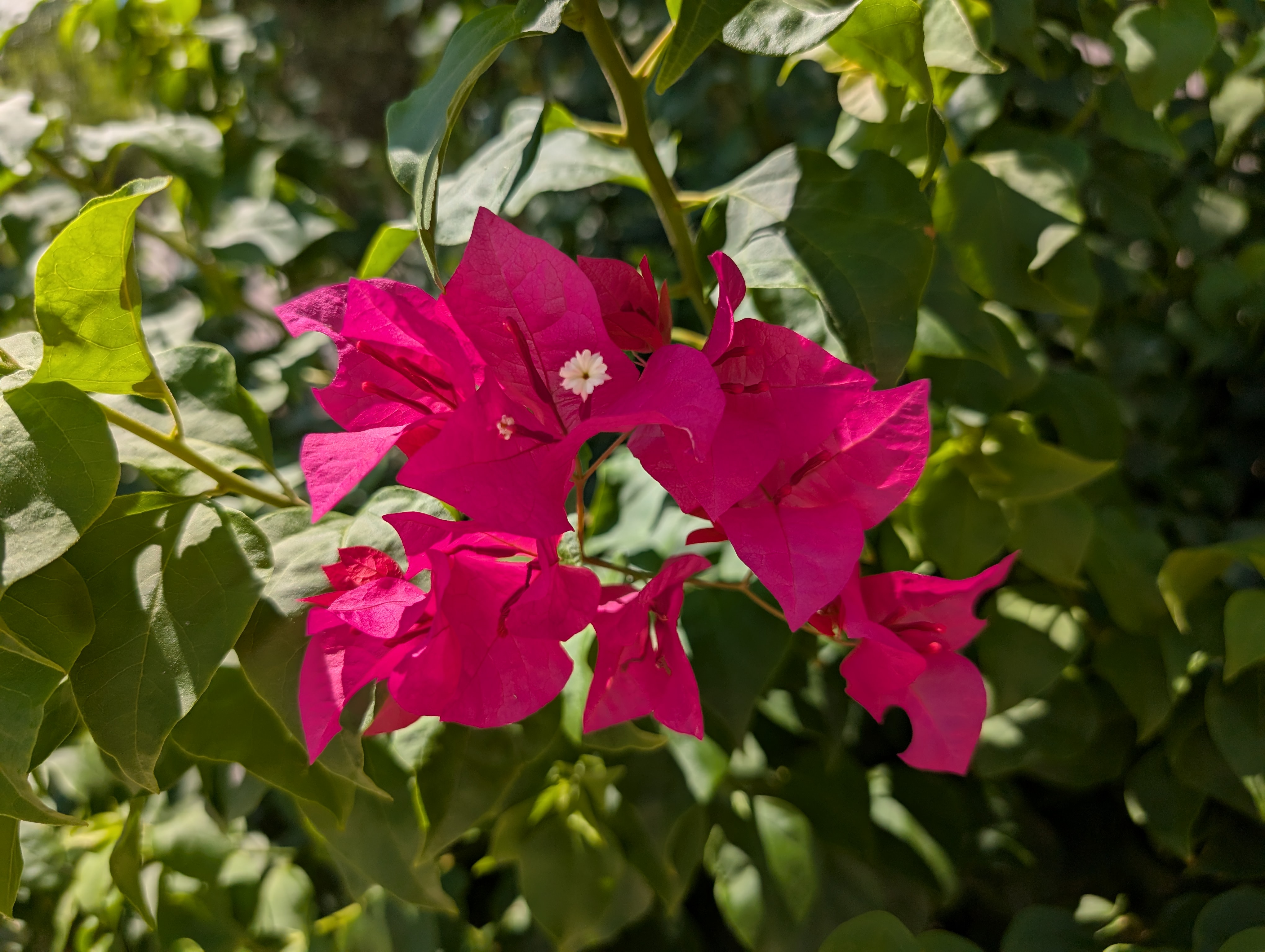


Meanwhile, the Samsung Galaxy S25 will have the advantage in zoom performance, thanks to its telephoto camera. The Galaxy S25 and Pixel 9's main camera will perform similarly, with Google's color science often producing warmer images and Samsung's producing cooler ones.
Lastly, the front-facing camera is only 12MP, but it gets the job done. Put simply, you're not buying the Galaxy S25 for its camera system. If that's something you really care about, you have no choice but to look to the OnePlus 13 or Galaxy S25 Ultra for that.
Samsung Galaxy S25: Software and AI
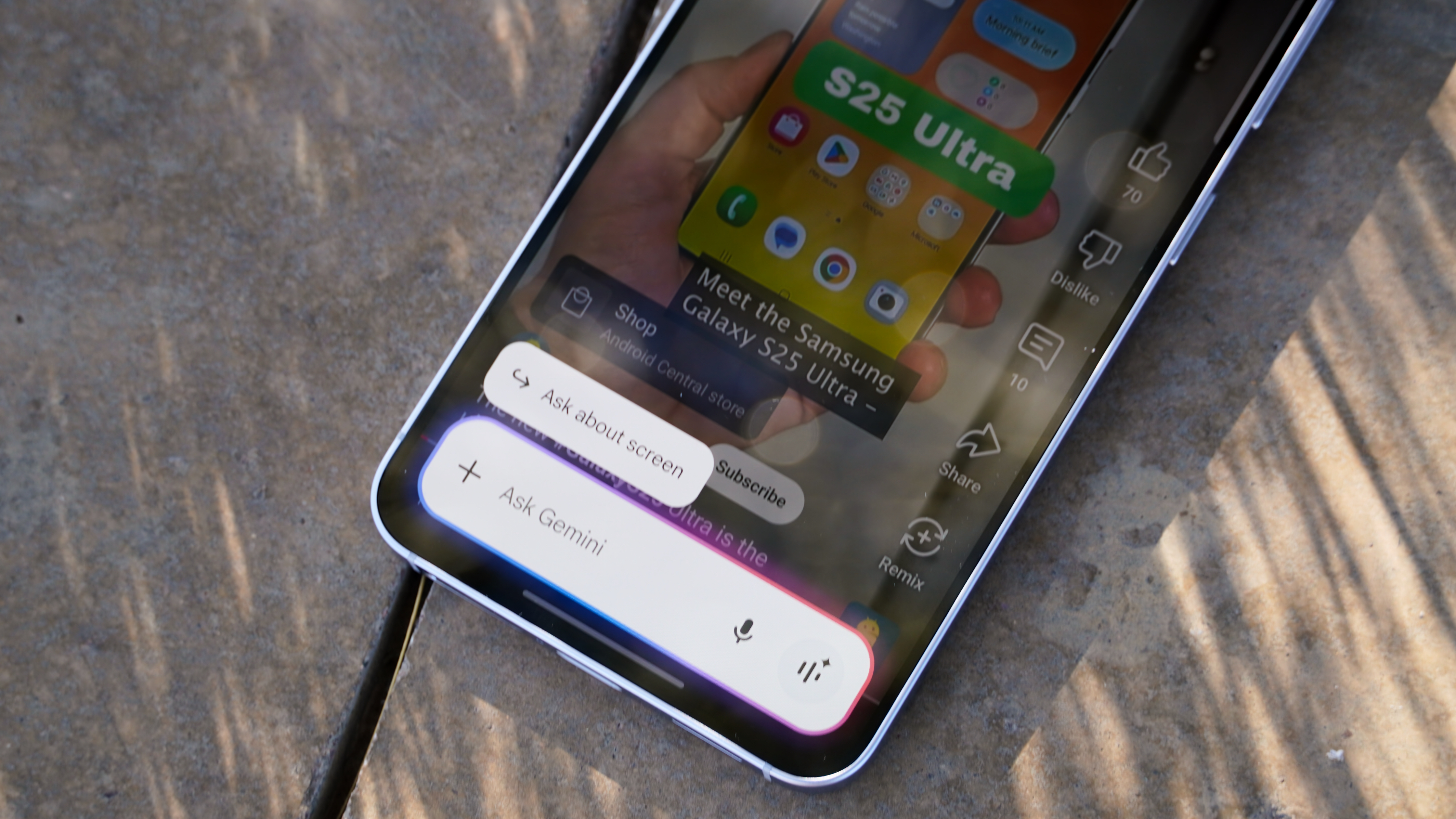
- Offers both the Galaxy AI and Google AI suites, blending Samsung's mobile AI prowess with Gemini.
- One UI 7 is a major leap for Samsung software — it feels fresh, new, and responsive.
I've been a consistent critic of Samsung's software approach, specifically One UI, in recent years. It reached the point where I refused to consider Samsung phones as my daily driver. That's why it should say a lot that I love One UI 7. I'm not sure if it's leapfrogged the Pixel Launcher yet, but it's ahead of OxygenOS, Hello UI, and iOS in my book. That's something I couldn't even fathom saying before trying One UI 7 on the Galaxy S25.
What makes One UI 7 so great? It's hard to pinpoint one feature or two — it's more about how fresh and new the operating system feels. I prefer the split control panel/notification shade from iOS, and I genuinely like the bubbly and rounded look of One UI now. The app drawer is better, too. You can finally switch between One UI and other Android skins without the learning curve. Everything just makes sense.
Of course, there's more to improve. Samsung should work on cutting down on the bloat further and eliminating unnecessary third-party apps from stock One UI. I don't know why my Galaxy S25 ships with LinkedIn and other Microsoft apps, but I hate it.
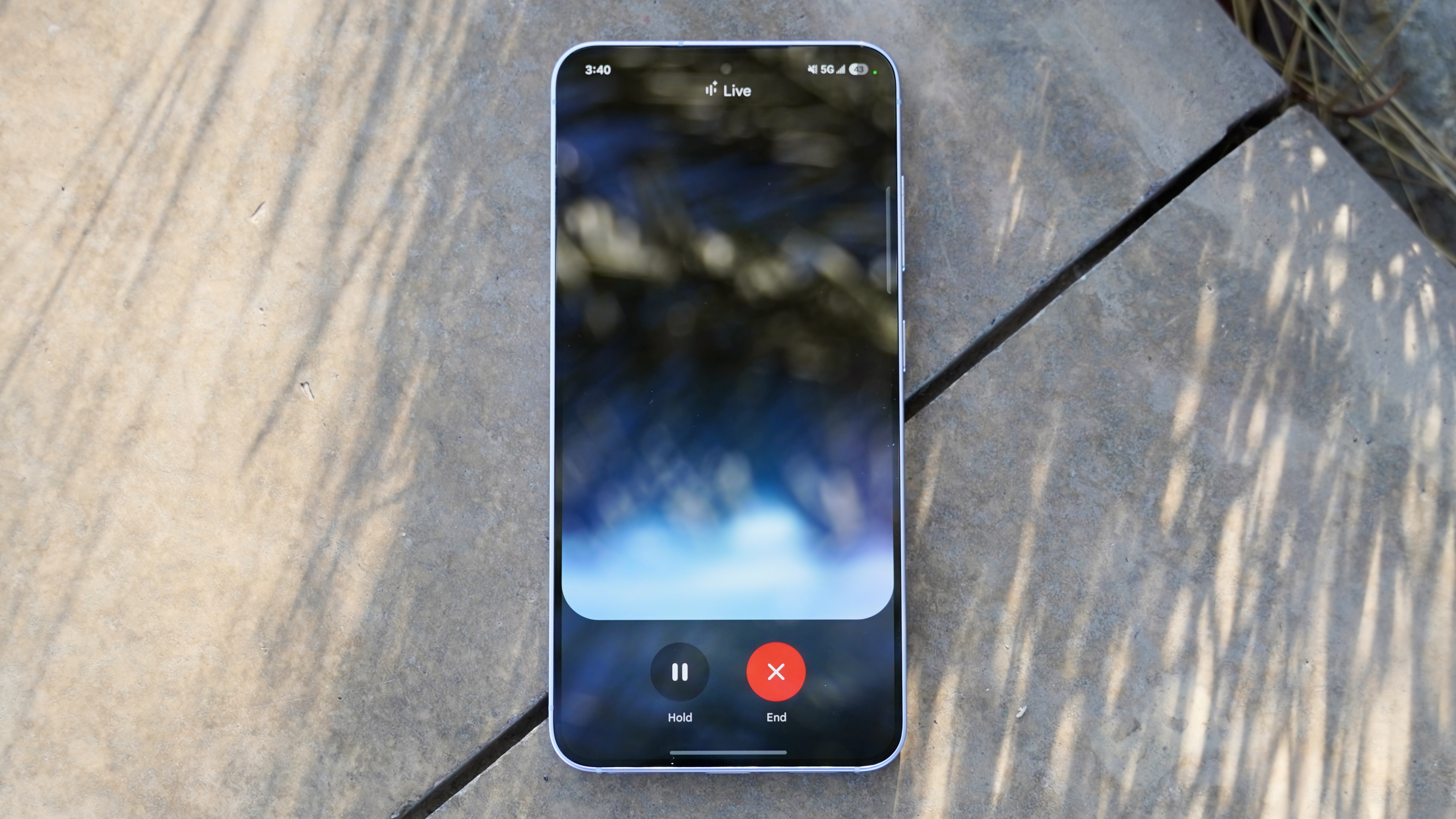
The Galaxy S25 incorporates many of Google's best AI features, including Gemini, Circle, and Search, as well as Samsung's comprehensive Galaxy AI suite. It's like the best of both worlds.
One thing worth noting is the significant improvement in Samsung's image editing features over the years. Object removal and generative editing with Galaxy AI is hands-down better than anything Apple or Google offer, as you can see above.
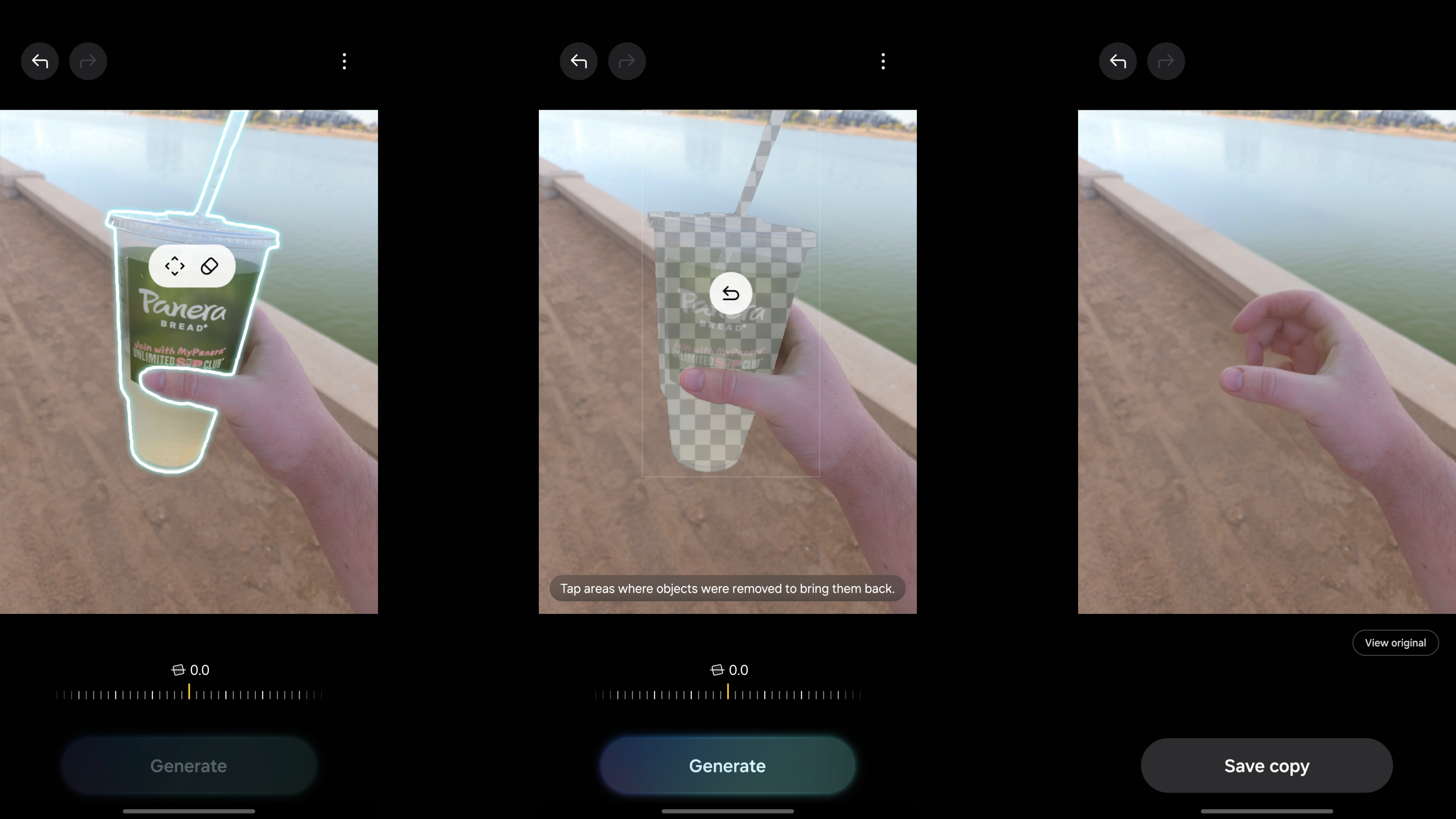
To sum up, if you haven't used One UI in a while or have been disappointed by it in the past, it's time to give it a second chance. With seven years of promised software updates, the Samsung Galaxy S25 should also get better over time.
Samsung Galaxy S25: Competition
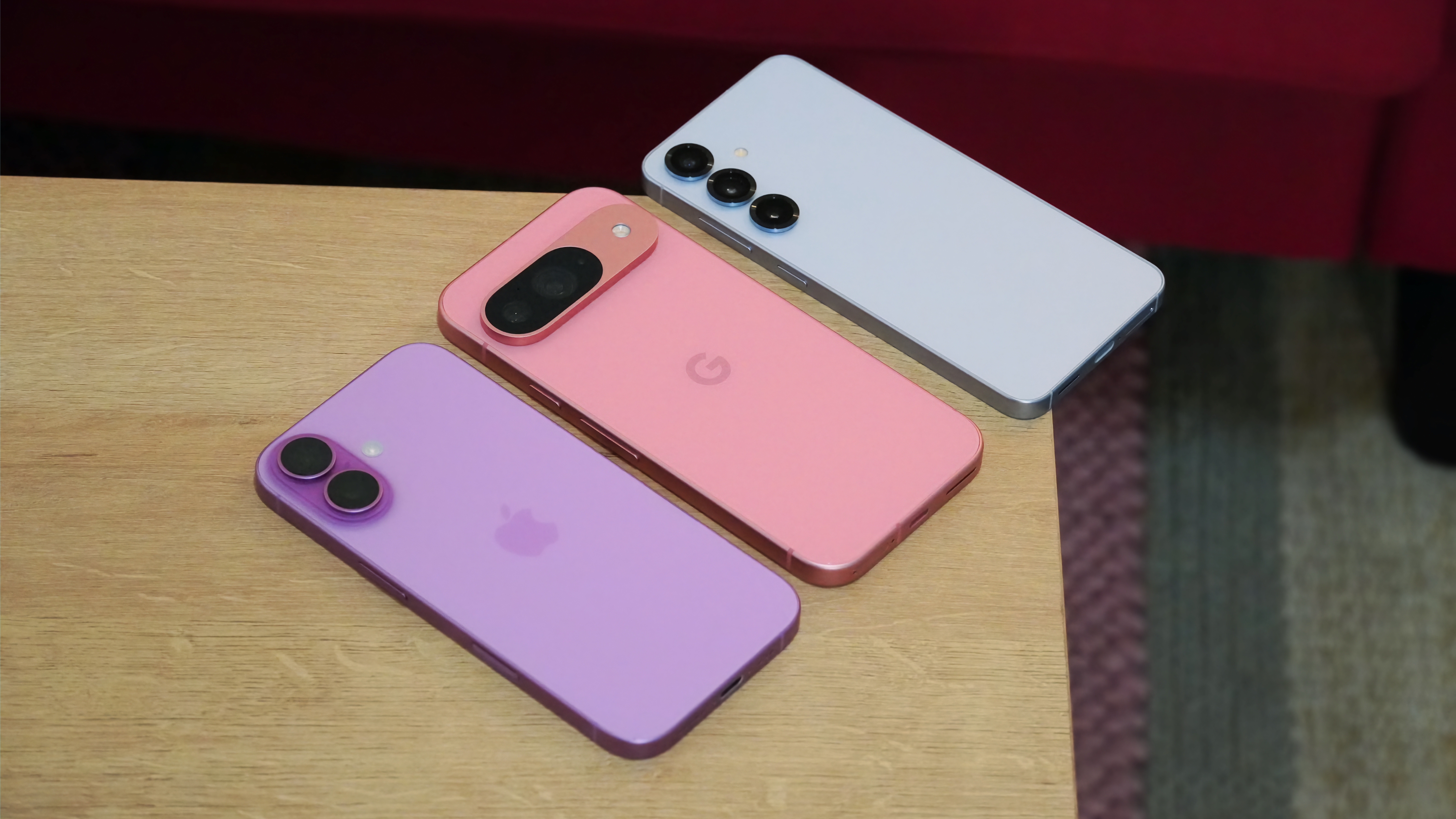
Currently, the $799 Samsung Galaxy S25's biggest competitors are the Google Pixel 9 and the iPhone 16. You could argue that prospective Galaxy S25 buyers probably aren't considering an iPhone 16 and vice versa, so that leaves the Pixel 9 — also priced at $799.
Some will prefer Google's software or camera profile to that of the Galaxy S25, but I have a hard time swallowing how much bigger and heavier the Pixel is without providing enough benefits. The Samsung phone is thinner, lighter, and more compact, but also faster and more capable.
Other than the Pixel 9 and iPhone 16, there isn't a phone that directly competes with the Galaxy S25 in terms of size. However, if you're looking for an Android flagship for around $800 and can live with a bigger screen, consider the OnePlus 13 for $100 more. It's only slightly slower than the Galaxy S25, while offering a better display, improved camera, faster charging, and more base storage. This is the phone I'd buy if I were looking for a Samsung Galaxy S25 Ultra-esque phone at near-base Galaxy S25 prices.
Samsung Galaxy S25: Should you buy it?
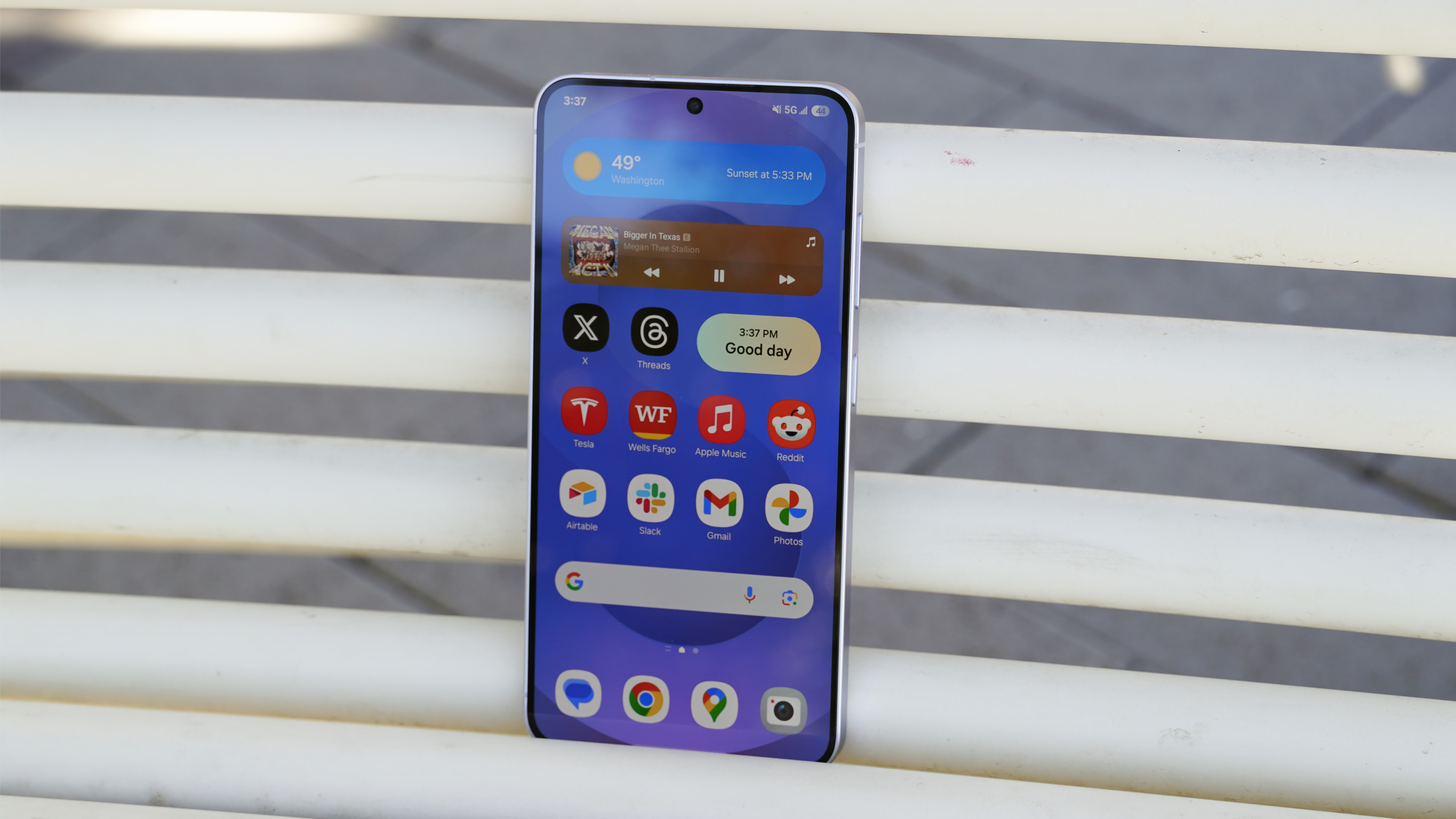
You should buy this if...
- You want a small phone with the latest Snapdragon 8 Elite for Galaxy processor
- You have an older Galaxy phone, or aren't worried about camera quality
- You want the best of both worlds with Google AI and Galaxy AI, and like One UI 7
You shouldn't buy this if...
- You want a MagSafe-compatible phone without using a case
- You need newer camera tech inside your smartphone
- You're willing to use a bigger and more expensive competitor, like the OnePlus 13
After spending time with the Samsung Galaxy S25, two things are simultaneously true. This is a standout compact flagship, and Samsung could've given it more upgrades. It feels like it's the same story every time a Galaxy device is released. There's just enough to make the Galaxy S25 a really compelling device, and just as many recycled ideas and components to make buyers hesitate.
The phone's cameras, charging speeds, durability ratings, and connectivity capabilities are just a few areas where Samsung could have easily improved the Galaxy S25 — but chose not to.
Most people just want a good, powerful, and reliable device, and the Samsung Galaxy S25 checks all those boxes. It's also perhaps the only compact Android flagship left on the market today. That's how I'm able to recommend it despite my frustration with how much Samsung reused from prior Galaxy generations.
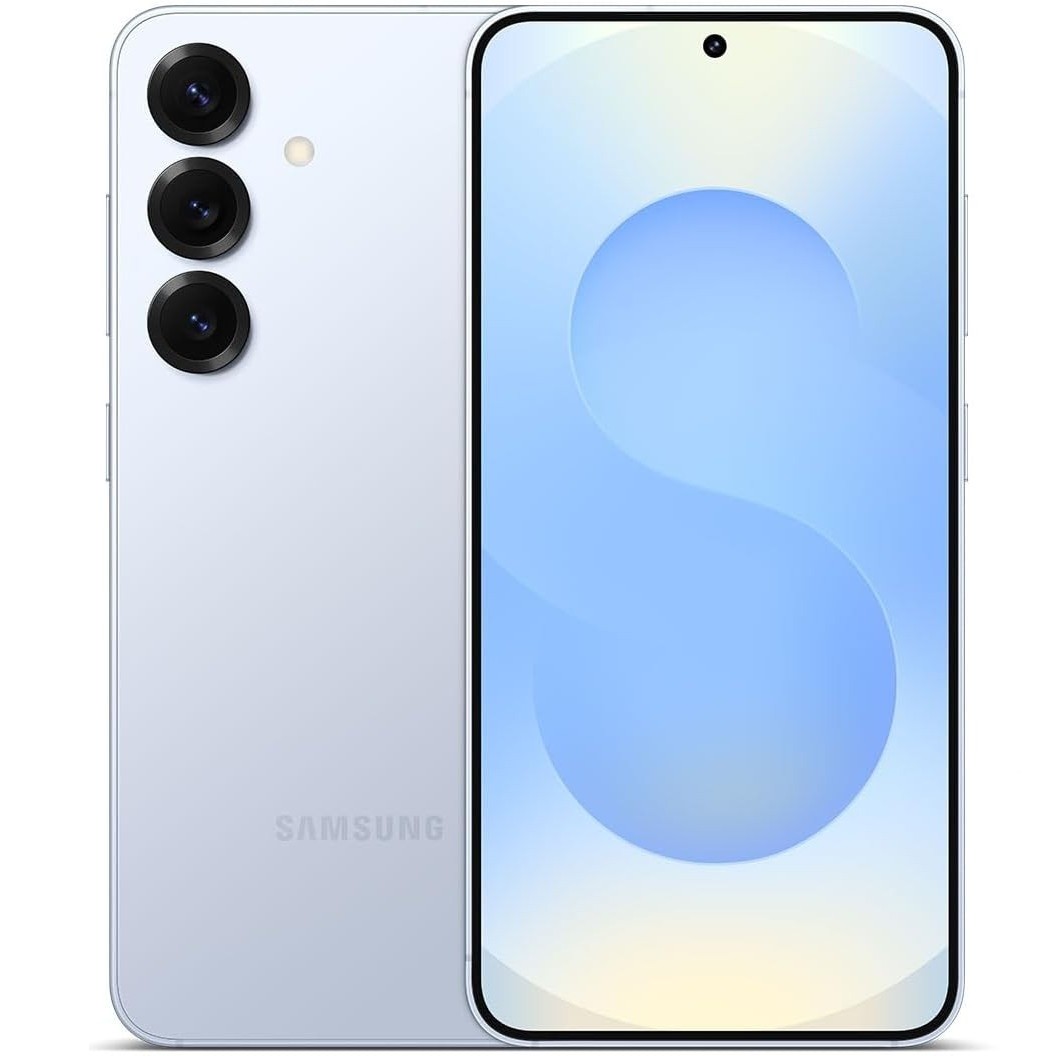
Small but mighty
Samsung's Galaxy S25 might not feel the most exciting, but it's definitively the best small flagship phone in 2025. If you can look past some deficiencies compared to the Plus or Ultra models, the Galaxy S25 is a solid buy at around $800.

Brady is a tech journalist for Android Central, with a focus on news, phones, tablets, audio, wearables, and software. He has spent the last three years reporting and commenting on all things related to consumer technology for various publications. Brady graduated from St. John's University with a bachelor's degree in journalism. His work has been published in XDA, Android Police, Tech Advisor, iMore, Screen Rant, and Android Headlines. When he isn't experimenting with the latest tech, you can find Brady running or watching Big East basketball.
You must confirm your public display name before commenting
Please logout and then login again, you will then be prompted to enter your display name.
